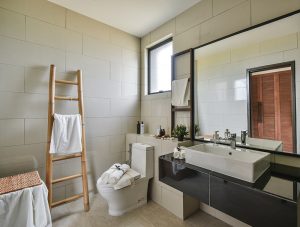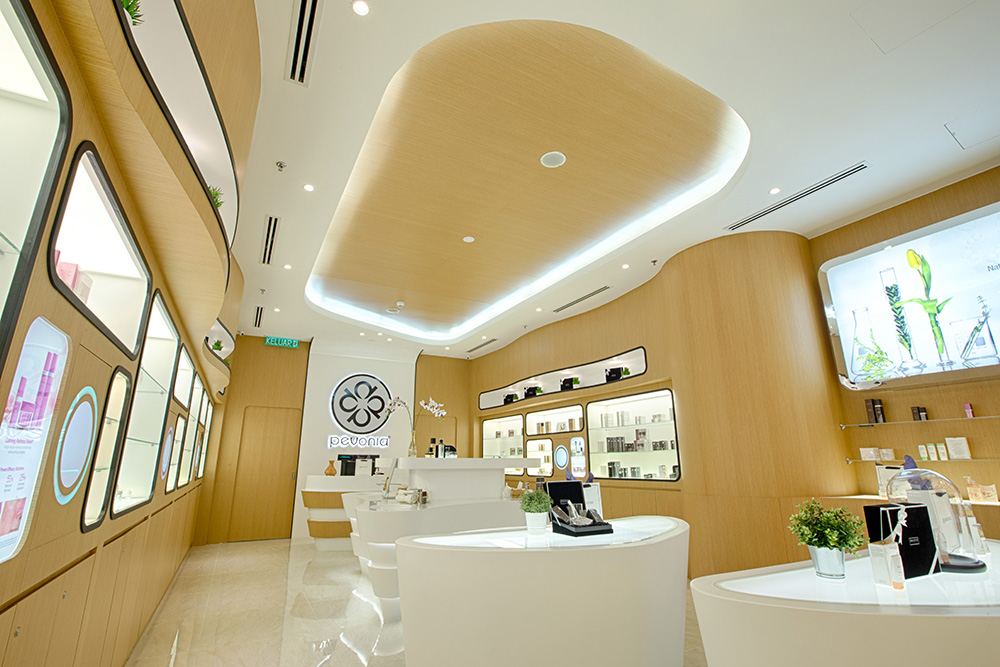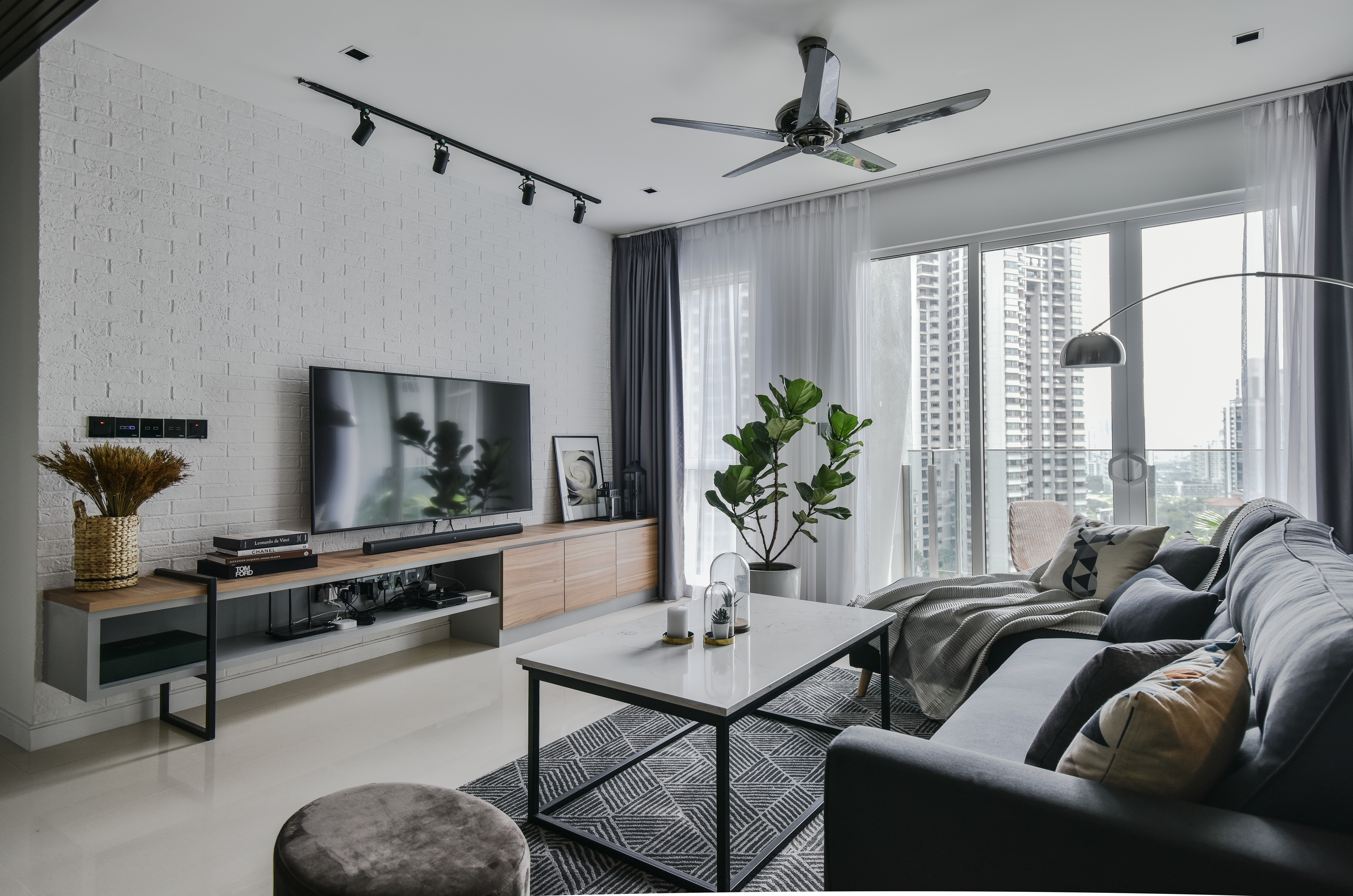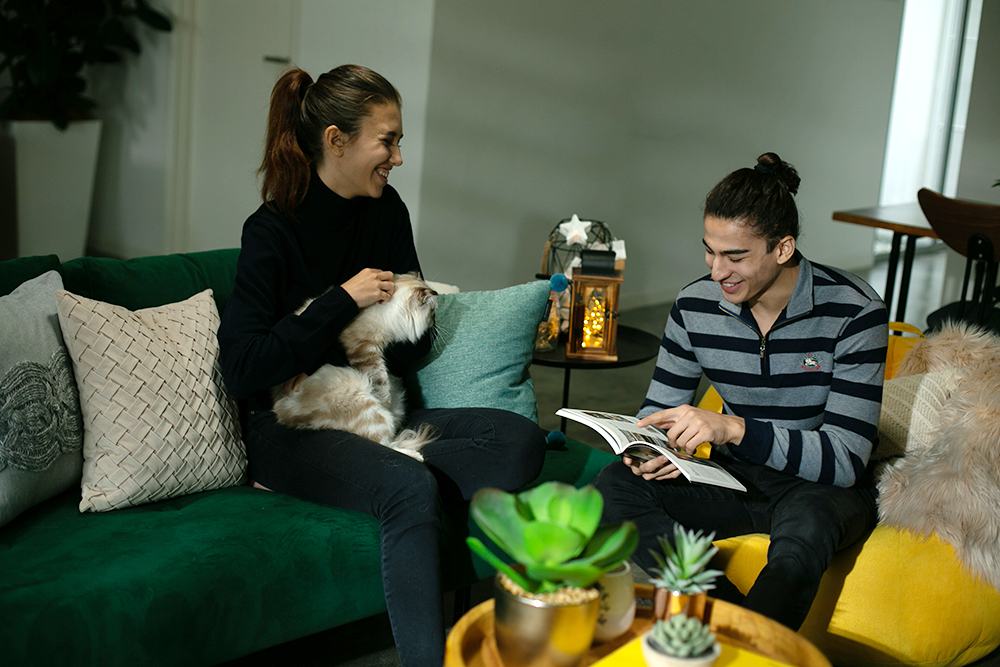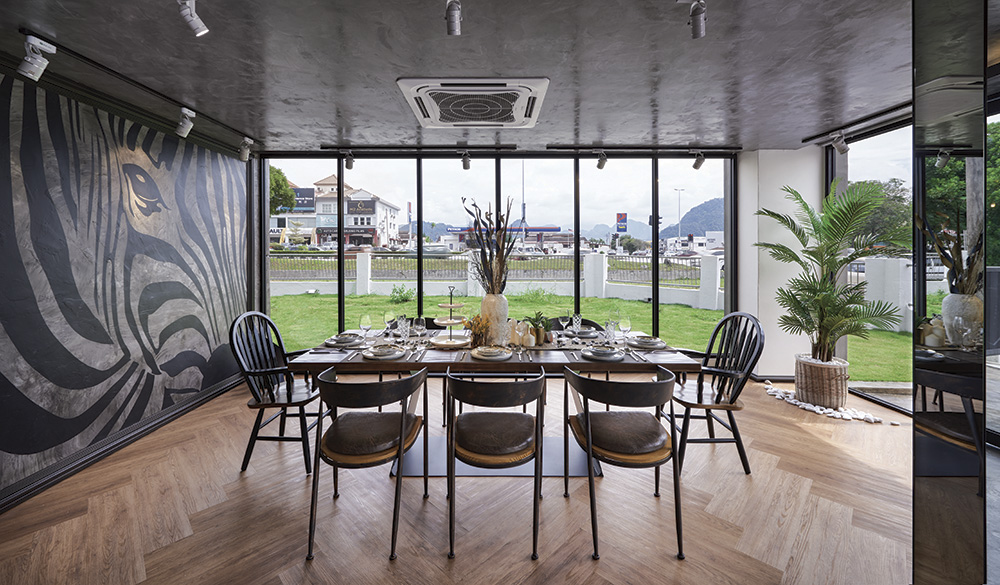
Boasting a harmonious union of resort-style architecture and culturally-informed design choices, this showhouse embodies the tranquility and splendour that define its source of inspiration.
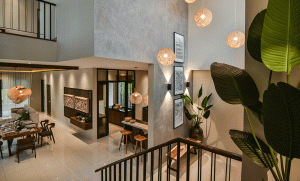

Drawing inspiration from the ancient Sanskrit word for ‘peacock’ which is ‘mayur’, the 200-acre Setia Mayuri development is a Bali-inspired sanctuary that aims to entice and bedazzle at every turn. Its breath-taking backdrop that is Broga Hill’s lush greenery is only matched in beauty by the alluring Balinese culture which has been intricately woven into every facet of the project. As it is meant to be a shining example of this concept, the development’s bungalow show house was shaped by Noel Tan and Jessica Cheah into the embodiment of Balinese culture in all its exquisite charm.
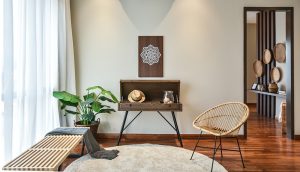
Key Balinese design and architecture philosophies that were already incorporated during the construction phase were artistically accentuated through the use of traditional raw materials and blended with modern lifestyle preferences. For an added touch of luxurious exclusivity, decorations custom-made by the finest craftsmen from across the globe were imported and used to give the showhouse an even more authentic Balinese aesthetic.
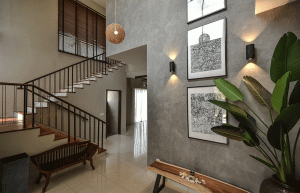
Upon stepping through the front door, visitors are immediately greeted by striking Balinese artworks adorning a wall covered with grey textured paint that evokes the use of natural stone common in Balinese architecture. The bench made out of reclaimed wood underneath and the nest pendant lights reaching down from the double-volume ceiling further enforce the Balinese philosophy of being in harmony with nature in the space.
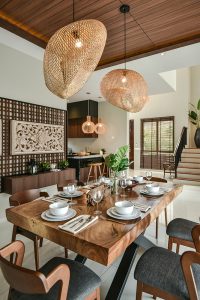
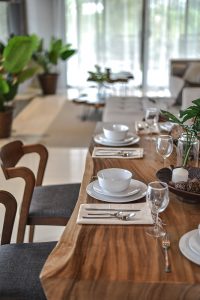
Inside, the main social areas are grandiose in their spaciousness with nearly every designated space being visible no matter the vantage point. Nest pendant lights abound here as well with two particularly large ones hanging over the dining table. Made of solid wood and paired with padded wooden dining chairs, the table enforces nature’s presence in the space with its stunning wood grain on full display. Adding just the right amount of cultural artistry to the picture are two Balinese stone carvings framed by wooden fencelike panels and mounted on the nearby wall.
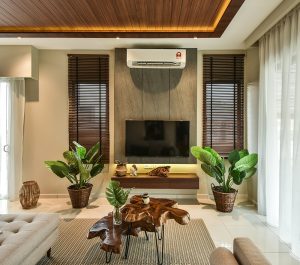
Cultural aesthetics and modern tastes continue to be balanced in the living area in truly imaginative ways through a creative selection of colours and textures. While it is a thoroughly modern furnishing, the comfortably large L-shaped sofa stays true to the overall theme with its light stone grey fabric. A more direct application of Balinese design elements can be seen in the decision to cover the wall behind the television with large rough-looking slabs of stone. However, it is the two tree stump coffee tables that truly represent the harmonisation of natural and urban elements which is the cornerstone of modern Balinese architecture.

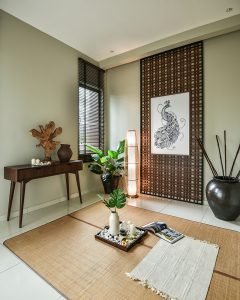
Eschewing slightly from this aesthetic for practical reasons, the kitchen is no less impressive with its combination of black and white quartz countertops, wooden cabinet doors and high kitchen island chairs made out of reclaimed wood. This is in complete contrast to the small meditation room upstairs which is dominated by wood furnishings like a bamboo floor mat. As a representation of both the cultural inspiration and namesake of the development, a gorgeous artwork of a peacock overlooks this quiet corner of the showhouse.
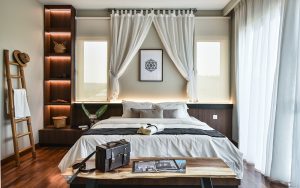
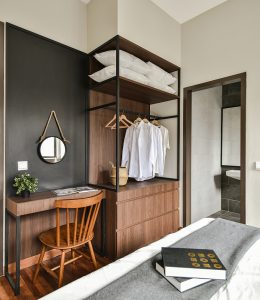
The celebration of wood’s sophisticated appeal is also prevalent in all the bedrooms with the master bedroom being a particularly noteworthy example. Details such as the partial wood panel divider separating the sleeping area from the workstation and the bamboo ladder serving as a towel rack marry function and culture effortlessly to create a truly one-of-a-kind atmosphere. Meanwhile, one bedroom is defined by its open concept wardrobe and small study desk with black wall panel combination with the other’s key characteristic being its rattan-panel headboard which stretches all the way to the ceiling. Providing an added note of cultural charm to each room is a carefully curated selection of Balinese artwork that drives home the impression of living in a resort on the Island of the Gods.
